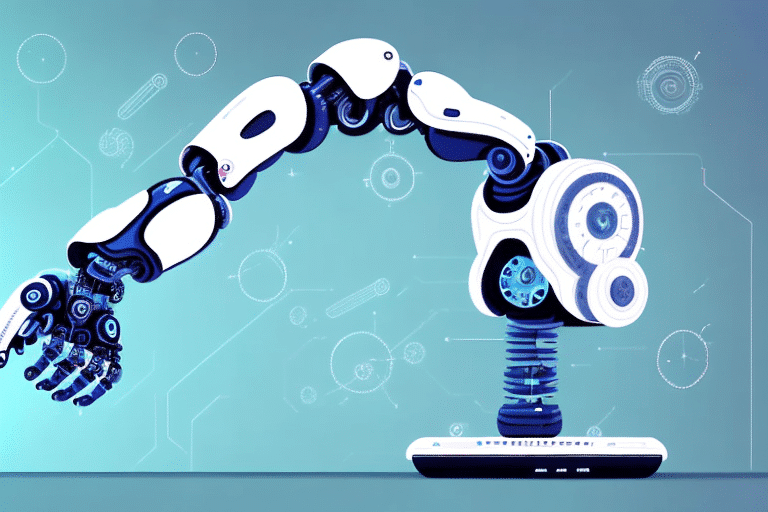The Role of AI in Optimizing Your Operations
The constant search for ways to improve efficiency and productivity has led businesses to embrace emerging technologies like artificial intelligence (AI). AI is transforming operations across industries, from manufacturing to healthcare, logistics, and customer service. In this article, we explore the basics of AI and its impact on operations, its key benefits, real-life examples of AI in action, different types of AI technologies, and best practices for implementation and adoption.
How AI is Revolutionizing the Way Businesses Operate
AI refers to the ability of machines to mimic human intelligence and perform tasks such as learning, problem-solving, and decision-making with accuracy and speed. AI algorithms can process vast amounts of data, spot patterns, and identify insights that humans may miss, enabling businesses to anticipate customer needs, optimize processes, and make informed decisions in real-time.
One of the most significant ways AI is revolutionizing businesses is through automation. AI-powered automation can streamline repetitive tasks, freeing up employees to focus on more complex and creative work. For example, IBM Watson can handle customer inquiries and support, while machine learning algorithms can analyze financial data and make investment recommendations. This not only saves time and money but also improves accuracy and efficiency.
Understanding the Basics of AI and Its Impact on Operations
AI can impact operations in various ways, including automating routine tasks, improving accuracy, reducing errors, predicting maintenance needs, optimizing supply chain management, enhancing customer service, and providing real-time insights to support decision-making. The use of AI technologies can lead to cost savings, increased efficiency, and reduced risks.
One of the key benefits of AI in operations is its ability to learn and adapt. By analyzing data and patterns, AI can continuously improve processes and make more accurate predictions. This can lead to better resource allocation, reduced waste, and improved overall performance.
However, the implementation of AI in operations requires careful planning and consideration. It is crucial to ensure that the technology is aligned with the organization's goals and values, and that it is implemented in an ethical and responsible manner. Additionally, proper training and support must be provided to employees to ensure a smooth transition and successful adoption of the technology.
Key Benefits of Using AI to Optimize Operations
- Improved Accuracy: AI reduces human error by automating tasks.
- Faster Data Analysis: AI can process and analyze large datasets quickly.
- Enhanced Productivity: Automation frees up employees to focus on higher-value tasks.
- Better Decision-Making: AI provides data-driven insights for informed decisions.
- Cost Reduction: Streamlined processes and reduced errors lead to significant savings.
Moreover, AI can assist in predicting maintenance needs, reducing downtime, and improving overall equipment effectiveness. By analyzing data from sensors and other sources, AI can identify patterns and anomalies that may indicate potential equipment failures. This allows businesses to schedule maintenance proactively, reducing the risk of unexpected downtime and costly repairs. Additionally, AI can help optimize equipment performance by adjusting settings and parameters in real-time, ensuring that machines operate at peak efficiency.
Real-Life Examples of Companies Using AI for Operational Efficiency
AI is already being used by several companies to optimize operations:
- Amazon: Utilizes AI algorithms to manage inventory, forecast demand, and recommend products to customers.
- IBM Watson Health: Analyzes patient data and provides personalized treatment recommendations.
- General Electric (GE): Optimizes manufacturing processes and employs AI-powered chatbots for customer service.
- JPMorgan Chase: Uses AI to analyze legal documents and extract important information, significantly reducing time and resources.
- UPS: Implements AI algorithms to optimize delivery routes and reduce fuel consumption, resulting in substantial cost savings.
These examples demonstrate how AI can drive operational efficiency across various industries, leading to enhanced performance and competitive advantage.
The Different Types of AI Technologies That Can Optimize Your Operations
There are several AI technologies that businesses can use to optimize operations:
- Machine Learning: Uses algorithms to learn from data and improve accuracy over time.
- Natural Language Processing (NLP): Enables machines to understand and respond to human speech and language.
- Computer Vision: Helps machines interpret and analyze visual data.
- Robotics: Automates tasks using physical machines.
- Predictive Analytics: Uses data to forecast future outcomes.
- Cognitive Computing: Combines machine learning, NLP, and other techniques to simulate human thought processes.
Additionally, AI technologies can be utilized in supply chain management to improve efficiency and reduce costs. For example, predictive analytics can forecast demand and optimize inventory levels, while computer vision can monitor and track shipments. Autonomous vehicles and drones can also be employed for transportation and delivery, reducing the need for human labor and increasing speed and accuracy.
How to Integrate AI into Your Existing Operations Infrastructure
Integrating AI into your existing operations infrastructure requires meticulous planning and execution. Here are the steps to consider:
- Identify Impactful Areas: Determine which areas of your operations can benefit most from AI.
- Understand Your Data: Assess the data you possess and ensure its quality for AI applications.
- Select the Right AI Technology: Choose AI tools that align with your operational needs.
- Process Changes: Adapt your processes to incorporate AI seamlessly.
- Data Governance: Implement practices to maintain data integrity and security.
- Workforce Training: Provide training and support to employees for smooth AI adoption.
Integration of AI is an ongoing process. As AI technology evolves, businesses must continuously evaluate and update their AI systems to ensure they remain effective and efficient. Additionally, ethical considerations such as transparency and accountability in AI decision-making processes are paramount. By taking a thoughtful and strategic approach to AI integration, businesses can reap the benefits of increased efficiency and productivity while minimizing potential risks.
The Potential Cost Savings and ROI of Implementing AI in Your Operations
Implementing AI in operations can lead to significant cost savings and return on investment (ROI). According to a study by McKinsey, AI can reduce costs by up to 90% while increasing revenue by up to 30%. These savings are achieved through increased productivity, reduced errors, and optimal resource utilization.
One of the key benefits of implementing AI in operations is the ability to automate repetitive tasks. This not only saves time but also reduces the risk of errors, which can be costly to fix. Additionally, AI can help identify areas where processes can be streamlined, leading to further cost savings.
Another advantage of AI in operations is the ability to make data-driven decisions. By analyzing large amounts of data, AI can provide insights that humans may not be able to see. This can lead to better decision-making and more efficient use of resources.
Addressing Common Concerns and Misconceptions About Using AI in Operations
Some common concerns and misconceptions about using AI in operations include:
- Fear of Job Displacement: While AI can automate certain tasks, it also augments human capabilities, allowing employees to focus on more strategic roles.
- Complexity of Implementation: Implementing AI can be complex, but with proper planning and expertise, it can be effectively managed.
- High Costs: The costs of AI adoption are decreasing as the technology becomes more accessible and scalable.
- Potential Bias: AI decision-making can be biased if not properly managed. This can be addressed through careful selection of data sets and ongoing monitoring of AI systems.
- Security Risks: Concerns about AI system vulnerabilities can be mitigated through robust security measures such as encryption and regular software updates.
By addressing these concerns proactively, businesses can effectively integrate AI into their operations without falling prey to common misconceptions.
Best Practices for Successful Implementation and Adoption of AI in Operations
To successfully implement and adopt AI in operations, businesses should consider the following best practices:
- Involve the Workforce: Engage employees in the AI adoption process to foster collaboration and reduce resistance.
- Design Seamless Processes: Ensure that AI tools integrate smoothly with existing workflows.
- Invest in AI Talent Development: Provide training and development opportunities to build AI expertise within the organization.
- Enable Data Governance: Maintain data quality and integrity through robust governance practices.
- Establish Clear Goals and Objectives: Identify specific areas where AI can improve operations and set measurable targets for success.
- Prioritize Transparency and Ethics: Be transparent with employees and customers about AI usage, ensure AI does not discriminate or violate privacy rights, and regularly monitor AI systems for biases.
- Invest in Infrastructure: Allocate resources for necessary infrastructure, such as cloud computing and data storage, to support AI implementation.
By following these best practices, businesses can harness the full potential of AI to drive success and growth while minimizing potential risks.
In conclusion, AI is a powerful tool that can help businesses optimize their operations, increase efficiencies, and maximize productivity. By understanding the basics of AI, its impact on operations, its key benefits, real-life examples of AI in use, the different types of AI technologies, and best practices for implementation and adoption, businesses can harness its potential to drive success and growth.




















